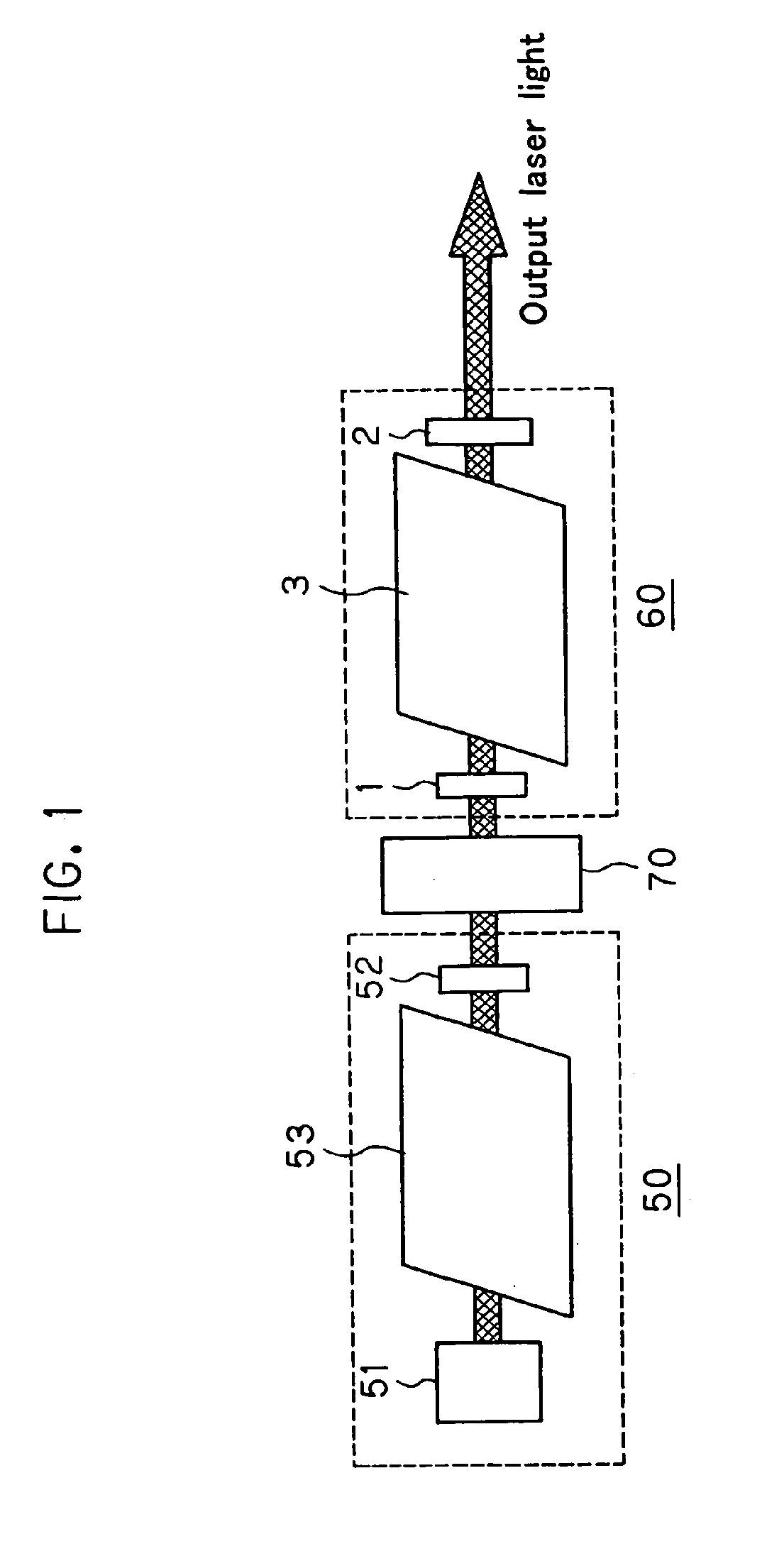Two-stage laser system for aligners
a laser system and aligner technology, applied in the field of two-stage laser systems for aligners, can solve the problems of low energy stability, inability to meet the specifications for low coherence, and problems in mopo mode, so as to reduce spatial coherence, high stability, and high output efficiency
- Summary
- Abstract
- Description
- Claims
- Application Information
AI Technical Summary
Benefits of technology
Problems solved by technology
Method used
Image
Examples
Embodiment Construction
[0195] First of all, the principles of the two-stage laser system for aligners according to the invention are now explained.
[0196] As described with reference to FIG. 73, it has been found that in the MOPO system comprising an oscillation-stage laser and an amplification-stage laser in which laser light (seed light) oscillated out of the oscillation-stage laser is entered for amplification, and which comprises a resonator comprising an input side mirror and an output side mirror, if the resonator in the amplification-stage laser is configured as a stable resonator, it is then possible to achieve a low spatial coherence equivalent to that of the oscillation-stage laser.
[0197]FIG. 1 is illustrative in schematic of the basic arrangement of the two-stage laser system for aligners according to the invention. The two-stage laser system for aligners according to the invention is a MOPO system as described above, which comprises an oscillation-stage laser (MO: Master Oscillator) 50, and a...
PUM
| Property | Measurement | Unit |
|---|---|---|
| angle | aaaaa | aaaaa |
| wavelength | aaaaa | aaaaa |
| diameter | aaaaa | aaaaa |
Abstract
Description
Claims
Application Information
 Login to View More
Login to View More - R&D
- Intellectual Property
- Life Sciences
- Materials
- Tech Scout
- Unparalleled Data Quality
- Higher Quality Content
- 60% Fewer Hallucinations
Browse by: Latest US Patents, China's latest patents, Technical Efficacy Thesaurus, Application Domain, Technology Topic, Popular Technical Reports.
© 2025 PatSnap. All rights reserved.Legal|Privacy policy|Modern Slavery Act Transparency Statement|Sitemap|About US| Contact US: help@patsnap.com



